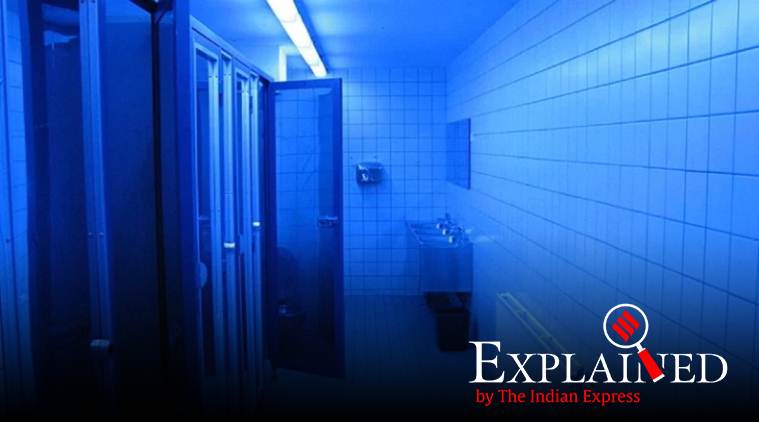 Ultraviolet radiation is one of two methods for sanitising and disinfecting public spaces from bacteria and viruses — the other being chemicals. (Image: JIP/Wikimedia Commons)
Ultraviolet radiation is one of two methods for sanitising and disinfecting public spaces from bacteria and viruses — the other being chemicals. (Image: JIP/Wikimedia Commons)
Can you kill the novel coronavirus with ultraviolet light? Yes, you can, but the hurdle for such an approach lies in finding a device that would emit sufficient amounts of ultraviolet light while being, at the same time, energy-efficient and portable. Now, researchers have reported that such a device is feasible — personal, handheld, and built from a newly discovered class of conductors. They have reported their findings in the Nature Group journal Physics Communications.
Ultraviolet light
In the broad spectrum of electromagnetic radiation that comes from the sun, and which is transmitted in waves or particles, visible light is just one of several regions that are defined based on the wavelength and frequency of these waves or particles. When these regions are arranged according to wavelength, ultraviolet light comes between visible light and X-rays — that is, the wavelength of UV light is smaller than that of visible light and greater than that of X-rays. The wavelength of ultraviolet radiation is between 10 nanometres and 400 nanometres (1 nanometre is a billionth part of a metre).
 Public spaces can be disinfected with chemicals or UV light. (Source: Penn State University)
Public spaces can be disinfected with chemicals or UV light. (Source: Penn State University)
Ultraviolet radiation in the 200-300 nanometre range is known to destroy the virus, making it incapable of reproducing and infecting, according to Pennsylvania State University, which was involved in the new research. Ultraviolet radiation is one of two methods for sanitising and disinfecting public spaces from bacteria and viruses — the other being chemicals.
Both chemicals and ultraviolet radiation are meant to disinfect public spaces only, not human skin. As the World Health Organization points out: “Ultra-violet (UV) lamps should not be used to disinfect hands or other areas of your skin. UV radiation can cause skin irritation and damage your eyes.”
The hurdles
To disinfect areas from the coronavirus with UV radiation, one needs sources that emit sufficiently high doses of UV light. Such devices do exist, but as Pennsylvania State University points out, these radiation sources are “typically an expensive mercury-containing gas discharge lamp, which requires high power, has a relatively short lifetime, and is bulky”.
The solution is to develop UV light-emitting diodes (LEDs), which would be portable and energy-efficient. Diodes are, simply put, specialised conductors that transmit electricity in one direction. LEDs that emit UV light, too, exist. But again, “applying a current to them for light emission is complicated by the fact that the electrode material also has to be transparent to UV light”.
The challenge was to find such a material.
The solution
The Pennsylvania State University team, in collaboration with materials theorists from the University of Minnesota, figured that the solution to this challenge could lie in a recently discovered new class of transparent conductors that use a material called strontium niobate. Indeed, theoretical predictions pointed to the material.
The researchers reached out to Japanese collaborators to obtain strontium niobate films, and tested their performance as UV transparent conductors. “We immediately tried to grow these films using the standard film-growth technique widely adopted in industry, called sputtering, We were successful,” Joseph Roth, a doctoral candidate at Pennsylvania State University, said in a statement.
The researchers said this is a critical step towards technology maturation which makes it possible to integrate this new material into UV LEDs at low cost and high quantity.
📣 The Indian Express is now on Telegram. Click here to join our channel (@indianexpress) and stay updated with the latest headlines
For all the latest Explained News, download Indian Express App.
"light" - Google News
June 03, 2020 at 05:44AM
https://ift.tt/3csX0Wj
Explained: Can a handheld device kill virus with UV light? - The Indian Express
"light" - Google News
https://ift.tt/2Wm8QLw
https://ift.tt/2Stbv5k
Bagikan Berita Ini














0 Response to "Explained: Can a handheld device kill virus with UV light? - The Indian Express"
Post a Comment